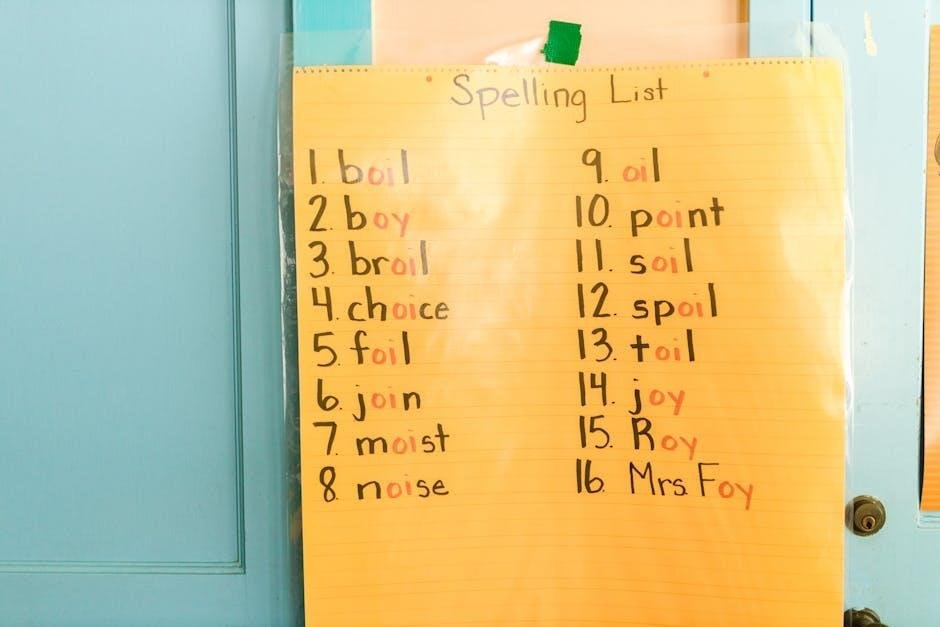Guided Phonics and Beyond: A Comprehensive Overview
Guided Phonics & Beyond is a research-based phonics program developed by Tara West. The curriculum facilitates a spiraled learning approach. It provides flexible lessons for whole and small group settings. Guided Phonics meets Science of Reading needs, ensuring effective phonics instruction.
Guided Phonics & Beyond is a comprehensive phonics curriculum designed to empower young readers. This program is aligned with the Science of Reading. It provides educators with the resources needed to foster strong foundational literacy skills. Developed by Tara West, the curriculum offers a structured, yet flexible, approach to phonics instruction. It is suitable for kindergarten through second grade.
The core of Guided Phonics & Beyond lies in its comprehensive scope and sequence. This curriculum is spiraled to ensure continuous review and reinforcement of key concepts. The program addresses various phonics skills. These skills include letter sounds, CVC words, digraphs, blends, vowel teams, and multisyllabic words.
Guided Phonics & Beyond integrates various components. These components include focus lessons, decodable books, and small group instruction resources. The program is designed to cater to diverse learning needs. It is accessible through digital platforms like Seesaw and Google Slides. This adaptability ensures that teachers can effectively implement the curriculum in various classroom settings, making it a valuable tool for educators.
Core Principles of Guided Phonics and Beyond
Guided Phonics & Beyond operates on several core principles. These principles ensure effective phonics instruction and student success. At its heart, the program prioritizes alignment with the Science of Reading. This alignment means instruction is based on evidence-based practices. It focuses on how children learn to read. A key element is systematic and explicit phonics instruction.
Another core principle is the importance of a spiraled curriculum. Guided Phonics & Beyond revisits previously taught skills throughout the year. This reinforcement helps students retain information and build a strong foundation. The program also emphasizes the use of decodable texts. Decodable texts provide students with opportunities to practice newly learned phonics skills in context. This practice promotes fluency and comprehension.
Flexibility and differentiation are essential aspects of Guided Phonics & Beyond. The curriculum offers resources for both whole group and small group instruction. This allows teachers to tailor instruction to meet the diverse needs of their students. Through these core principles, Guided Phonics & Beyond provides a robust framework for phonics instruction.
Alignment with the Science of Reading
Guided Phonics & Beyond’s strong alignment with the Science of Reading is a cornerstone of its effectiveness. The Science of Reading represents a vast body of research. This research explores how children learn to read. It emphasizes the importance of systematic and explicit phonics instruction. Guided Phonics & Beyond incorporates these research-backed principles into its design.
The curriculum’s focus on phonemic awareness, phonics, fluency, vocabulary, and comprehension reflects the key components of reading. Each lesson includes oral phonemic awareness drills. These drills are quick and efficient. This helps students develop essential skills in manipulating sounds. Decodable readers, a vital part of the program, provide opportunities for students to apply their phonics knowledge. This application helps students to read words accurately and fluently.
By adhering to the Science of Reading, Guided Phonics & Beyond ensures that instruction is effective. It is also aligned with the best practices in literacy education. Its comprehensive approach addresses all critical areas. This approach also supports students in becoming successful readers. The program makes the Science of Reading approach more manageable for teachers.
Curriculum Components: A Detailed Look
The Guided Phonics & Beyond curriculum includes a range of materials. These materials are designed to provide comprehensive support for both teachers and students. The core components include focus lessons. These lessons offer structured and explicit instruction in phonics skills. Decodable books allow students to practice these skills in context. These books contain only previously taught phonetic patterns and high-frequency words.
The curriculum also provides small group instruction resources. The Small Group Resource Kit includes materials for 24 students. These materials can be used simultaneously. This kit includes a Phonics Skill-Building Pocket Chart, Elkonin Box Magnetic Answer Boards, and Word Work Mats. These resources are compatible with each unit.
Additional components include Phonics Word-Building Magnetic Tiles, Large Plastic Mirrors, and Letter Tracing Sensory Pads. Rainbow Phoneme Phones are included in the kit, along with storage bins for organization. These components ensure that teachers have the tools to deliver engaging and effective phonics instruction. The inclusion of digital resources, like pre-loaded decodable books on Seesaw and Google, enhances accessibility.
Focus Lessons and Skill-Building
Guided Phonics & Beyond places significant emphasis on focus lessons. These are designed to explicitly teach and reinforce phonics skills. Each lesson plan incorporates oral phonemic awareness drills. These drills are quick and efficient. Teachers simply read from the plan, allowing students to actively engage. The lessons are structured to promote skill-building.
The program ensures students review the focus sound and map words. This enhances their ability to decode and encode effectively. The spiral learning aspect of the curriculum is crucial. It allows students to revisit and reinforce skills throughout the year. This approach supports long-term retention and mastery. Flexible lessons cater to both whole group and small group settings. This allows teachers to differentiate instruction.
The curriculum includes various activities. These activities are designed to make learning engaging. The Phonics Skill-Building Pocket Chart and Word Work Mats are key components. They facilitate hands-on practice and application of skills. Digital drills for Google Slides, PDF, and PowerPoint provide additional practice. They also offer a tech-integrated approach to skill-building.

Decodable Books: Features and Benefits
Guided Phonics & Beyond features decodable books designed to reinforce phonics skills. Each book contains 10 fiction and 10 nonfiction stories. These stories are crafted to align with the specific phonics skills. The books do not include irregular high-frequency words. They are introduced only after explicit teaching. This ensures students can apply their phonics knowledge.
The design of the books encourages students to read the text before viewing the pictures; This promotes decoding skills and prevents reliance on visual cues. Decodable books can be purchased individually, by unit, or as a complete bundle. They are also available in sets of 6 for small group instruction. The availability of digital versions further enhances accessibility. The decodable books are pre-loaded to Seesaw and Google.
These books are crucial for supporting the Science of Reading approach. They provide controlled practice with newly learned phonics patterns. By reading decodable texts, students build confidence. They develop fluency in decoding. The program’s comprehensive nature ensures students have ample opportunities. They can apply phonics skills in meaningful contexts. This makes the learning process effective.
Small Group Instruction Resources
Guided Phonics & Beyond provides extensive resources. These resources are designed to facilitate effective small group instruction. The Small Group Resource Kit includes materials for up to 24 students. It allows for simultaneous engagement. The kit contains a Phonics Skill-Building Pocket Chart. It also includes 24 Elkonin Box Magnetic Answer Boards.
Additionally, there are 24 Word Work Mats and 6 Sets of Phonics Word-Building Magnetic Tiles; Students can use 24 Large Plastic Mirrors and 24 Letter Tracing Sensory Pads. The kit also provides 24 Rainbow Phoneme Phones. These resources are organized in 4 Storage Bins for convenience. These materials align with each unit of the curriculum.
The program’s design ensures that small group instruction is easy to follow and effective. Teachers can use these resources to differentiate instruction. They can target specific phonics skills. The hands-on nature of the materials promotes active learning. It also enhances student engagement. The comprehensive nature of the kit supports a research-based approach. It helps to meet the diverse needs of all learners.
Digital Integration and Accessibility
Guided Phonics & Beyond incorporates digital components. These components enhance accessibility and engagement. The program includes digital drills for Google Slides, PDF, and PowerPoint. All Decodable Books are pre-loaded to Seesaw and Google. This allows for seamless integration into digital learning environments. These digital resources provide flexibility. They also cater to diverse learning preferences.
The digital integration extends to oral phonemic awareness drills. These drills are embedded in each lesson plan. They are quick and efficient. Teachers can easily implement them using digital platforms. This ensures that students receive consistent phonics instruction, regardless of the learning setting. The digital resources promote accessibility for all students.
The program’s website may use cookies. It may also collect data to improve user experience; Users should refer to the privacy policy for more details. These digital features allow teachers to deliver instruction. The features ensure that students have access to learning materials. The integration of technology enhances the overall effectiveness. It also supports the program’s alignment with the Science of Reading principles.

Scope and Sequence: Spiraled Learning Approach
Guided Phonics & Beyond employs a spiraled scope and sequence. This approach ensures effective phonics instruction. The curriculum revisits concepts. It also builds upon previously learned skills. This reinforcement aids long-term retention. It also promotes a deeper understanding of phonics principles. The scope and sequence is carefully designed. It introduces skills systematically. The curriculum builds from simple to complex concepts.
Unit 2 focuses on CVC words; It provides a fast-paced review. The review is especially helpful for students needing reinforcement. Later units cover digraphs, blends, and vowel teams. The curriculum includes multisyllabic words. This comprehensive approach ensures that students develop a strong foundation in phonics. The spiraled design allows for continuous review.
The program integrates oral phonemic awareness drills. These drills are embedded within each lesson plan. This provides efficient practice. The curriculum progresses logically. It supports students’ reading development. The detailed scope and sequence ensures that no critical skills are missed. The approach fosters confident and proficient readers. The spiraled nature reinforces learning throughout the program.

Implementation Strategies for Teachers
Effective implementation of Guided Phonics & Beyond requires careful planning. Teachers should familiarize themselves with the curriculum’s scope and sequence. This ensures a clear understanding of the progression of skills. Utilizing flexible lesson plans accommodates diverse learning needs. Whole group sessions introduce new concepts. Small group instruction provides targeted support.
The Small Group Resource Kit offers materials for 24 students. These materials facilitate simultaneous engagement. Integrate decodable books into reading instruction. Decodable books allow students to practice newly learned phonics skills. They also build fluency and confidence. Encourage students to read the text before viewing pictures. This promotes decoding skills.
Digital components, such as Seesaw and Google integration, enhance accessibility. They also provide interactive learning experiences. Utilize oral phonemic awareness drills within each lesson. These drills are efficient and effective. Regularly assess student progress to identify areas needing support. Adapt instruction based on assessment data. This ensures that all students receive appropriate instruction. The curriculum aligns with the Science of Reading. It is a must-have resource for transforming student learning.
Addressing Common Challenges and Kinks
Like any new program, Guided Phonics & Beyond may present implementation challenges. Some teachers may find the initial setup overwhelming. Familiarizing oneself with the curriculum’s components is crucial. The comprehensive nature of the program can be initially daunting. Breaking down the units into smaller, manageable segments can help.
Another challenge may involve adapting the curriculum to diverse student needs. While the program offers flexibility, differentiation is essential. Some students may require additional support in specific phonics areas. Targeted interventions and small group work can address these gaps. Regularly assess student progress. Adapt instruction based on individual needs.
Ensuring consistent implementation across all classrooms can also be a hurdle. Professional development and collaboration among teachers are vital. Sharing best practices and troubleshooting challenges together fosters a cohesive approach. Utilizing the digital resources effectively may require some technical proficiency. Teachers can explore the digital drills on Google Slides and PowerPoint. Addressing these challenges proactively ensures successful implementation. The curriculum aligns with the Science of Reading and is highly recommended.
Success Stories and Impact on Student Learning
Guided Phonics & Beyond has demonstrated a significant impact on student learning. Many teachers report transformative growth in their students’ reading abilities. The program’s alignment with the Science of Reading principles contributes to its effectiveness. Students show improved phonemic awareness and decoding skills. The spiraled approach ensures continuous reinforcement of concepts.
One teacher shared that her students’ reading scores soared after implementing the program. Another educator praised the curriculum’s ability to engage students in learning. Students who previously struggled with reading now demonstrate confidence and enthusiasm. The decodable books play a crucial role in building fluency and comprehension. The program’s comprehensive nature allows for targeted interventions.
The positive impact extends beyond academic gains. Students develop a love for reading. The program’s systematic approach builds a strong foundation. This leads to increased confidence and a positive attitude towards learning. The success stories highlight the program’s ability to empower students. Teachers find the resources easy to follow and effective. The curriculum is a valuable asset in any classroom. It fosters a supportive environment for literacy development.
In conclusion, Guided Phonics & Beyond offers immense value to educators. It is a comprehensive resource aligned with the Science of Reading. The program supports phonics instruction for young learners. Its structured approach facilitates effective teaching. The curriculum provides all-inclusive materials for educators.
The program’s spiral learning design reinforces skills. This ensures students build a strong foundation in reading. The inclusion of decodable books enhances decoding abilities. The focus lessons promote skill-building and engagement. The digital integration offers accessibility and flexibility. The program’s impact on student success is undeniable; It transforms struggling readers into confident learners.
Teachers appreciate its ease of use and effectiveness. The curriculum is easily adapted to meet individual needs. It supports whole-group and small-group instruction. Guided Phonics & Beyond empowers educators to deliver high-quality phonics instruction. It is a valuable investment in student literacy. The program’s long-term benefits extend beyond the classroom. It equips students with essential reading skills. These skills help them succeed academically and beyond. The curriculum’s comprehensive nature makes it an invaluable tool.





